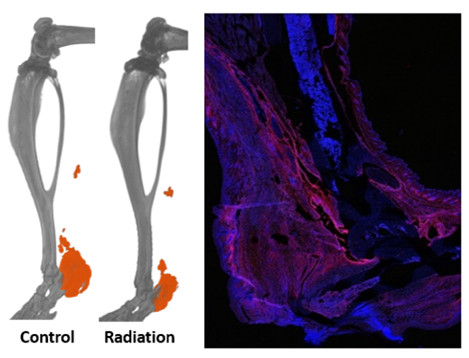Heterotopic Ossification (HO) is the abnormal growth of bone in soft tissues such as joints and muscles, a condition seen in over 60% of severe burn cases, major combat injuries, and around 10% of patients undergoing invasive surgical procedures. HO results in chronic pain, limited joint motion, and debilitating deformities. Unfortunately, effective treatment options are lacking, highlighting the importance of preventive measures. Although clinical studies demonstrate that radiation therapy (RT) can reduce HO, the optimal regimen and mechanisms remain unclear due to limited research and lack of relevant animal models. Collaborating with the Levi laboratory, we've shown that RT is effective in a mouse model that simulates burn and trauma patient, and we've also identified changes in the trauma environment that influence HO development. Our ongoing research aims to unravel the mechanisms of RT, refine treatment strategies for clinical application, and explore ways to extend its benefits to burn and trauma patients who are at high risk of severe HO and its associated complications.

Potential impact
We anticipate this work to enhance functional recovery and improve the quality of life for trauma patients, while advancing our understanding of HO pathogenesis and normal tissue response to radiation.
Techniques
Modeling trauma/burn relevant HO in syngeneic and transgenic mice, single cell RNA-sequencing, immunofluorescent IHC, DNA damage and cell cycle analyses, immune profiling with flow cytometry and CYTOF, patient biospecimen analyses and outcome assessment.